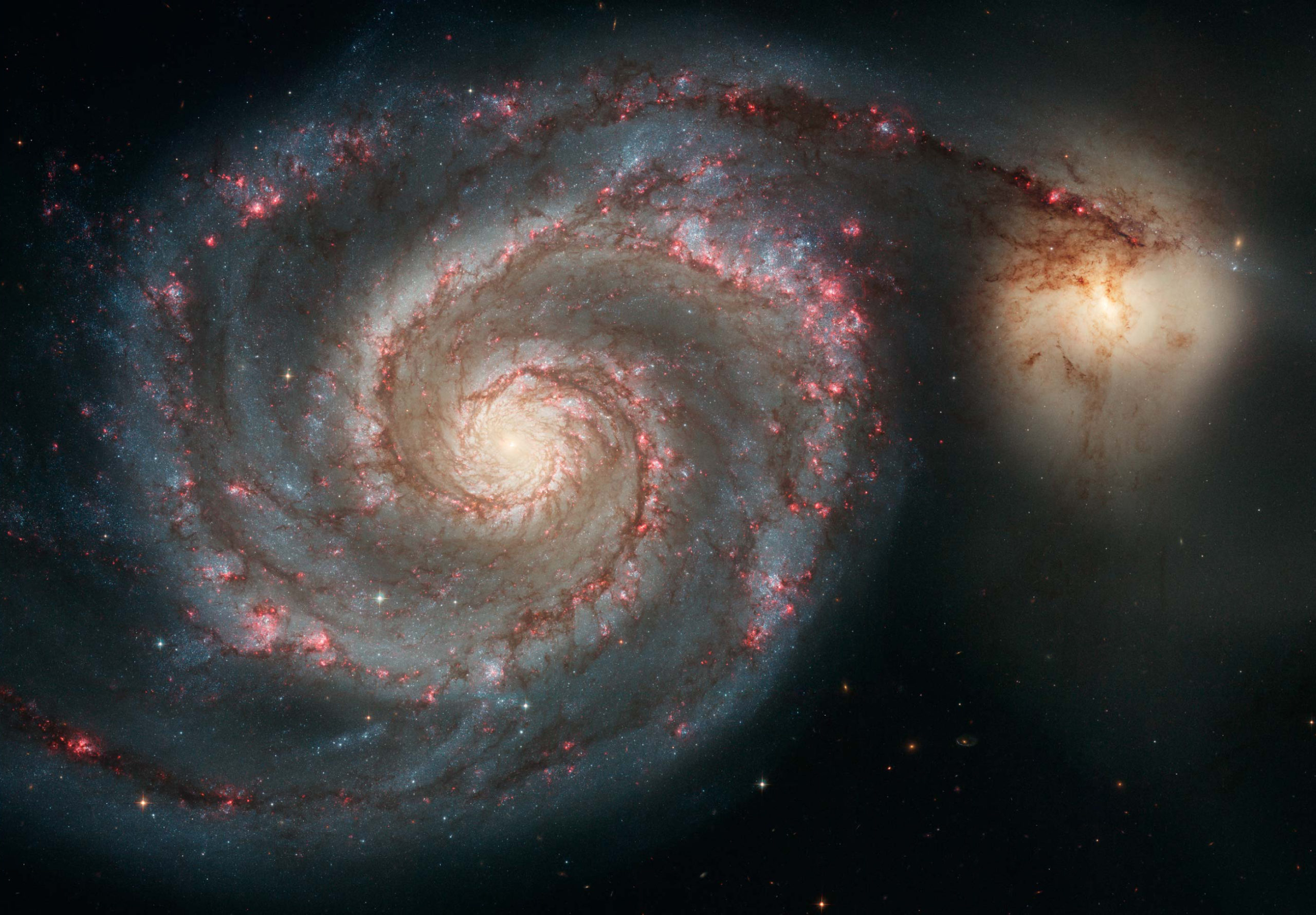0%

The Whirlpool Galaxy (Photo: NASA)
KATHMANDU: The Whirlpool Galaxy is a spiral galaxy relatively close to the Earth — about 30 million light-years away.
This is visible in the northern constellation Canes Venatici, southeast of the Big Dipper.
It is also known as M51 or NGC 5194. The galaxy is taken as one of the “brightest and most picturesque” ones that Earthlings can see, NASA has said.
The Space Telescope Science Institute also terms this phenomenon as one of “astronomy’s galactic darlings”.
Among the astrophysicists, Whirlpool’s highlights is the abundance of star explosions (supernovas) which have been recorded in recent years.
It is also familiar to stargazers and among those close galaxy neighbors to the Milky Way.
It was the first galaxy to be classified as a spiral by astronomers because of its shape.
Facts
Whirlpool Galaxy was discovered in 1773 by Charles Messier when he was charting the skies looking for objects.
In 1845, astronomer William Parsons observed the galaxy pair with a telescope at Birr Castle, Ireland, and saw the spiral structure.
Whirlpool and M51b have passed by or through each other once as they dance through a cosmic merger.
The whirlpool also has a supermassive black hole at its heart, surrounded by rings of dust.
The core of the Galaxy is quite active that makes the Whirlpool what astronomers often term a “Seyfert Galaxy”.
The M51b, which is the Whirlpool’s companion, is a dwarf galaxy.
(With inputs from Agencies)